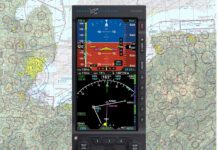As much as we may want to get back to normal and “reopen,” the ongoing response to the Covid-19 pandemic continues to wreak havoc on many industries worldwide. The airline and travel industries have taken a major hit, of course, and likely will continue to hemorrhage cash and well-paying jobs at least until a therapy and/or a vaccine are developed and implemented. Relatedly, a close friend who works at managing large events is out of work and doesn’t know when his industry will return, if at all.
What these industries might look like in a few years is anyone’s guess, but the rise of work-from-home practices and teleconferencing likely will result in their lengthy recovery, with the possibility they’ll won’t regain their January 2020 activity levels for some time. If the demand for air transportation remains severely depressed, what does that mean for general aviation? In my mind, it could go either way.
First of all, travel of any kind is more expensive than firing up a teleconferencing app and conducting a business meeting from your home office. That realization won’t go away, and the more time it takes to develop a vaccine, the more accustomed business people will become to not traveling. As far as GA is concerned, that translates into fewer aspiring pilots flying fewer hours to obtain fewer certifications.
Second, and for the time being, it’s not that people don’t want to travel; it’s that they want to do so without sharing space with people they don’t know. Like in airliner cabins, TSA checkpoint lines, exhibit halls and crowded restaurants. Yet long experience with both teleconferencing and business travel tell us nothing can replace personal interactions and seeing things for ourselves, first-hand. Reconciling the relative expense of business travel—when compared to teleconferencing—and the incredible value of up-close-and-personal professional interactions will be one challenge. General aviation can be a solution to this dilemma, but I see three changes that will be necessary.
First is safety and reliability. We tell ourselves that GA will never be as safe as the airlines, but that’s only true at the margins. Many operations already achieve safety marks directly comparable to the airlines. We can always do better, and will have to if we want to attract discretionary travel. Automation has a clear role to play here.
Second, the passenger experience has to change and offer amenities—air conditioning and in-flight connectivity, to name two—that reflect what’s available aboard modern airliners. The third change involves marketing and convincing potential customers that the first two barriers have been knocked down, while emphasizing that small groups pose fewer health risks.
We can do this, but it will require additional changes in the way we think about GA, both at the FAA and within the industry.
— Jeb Burnside




